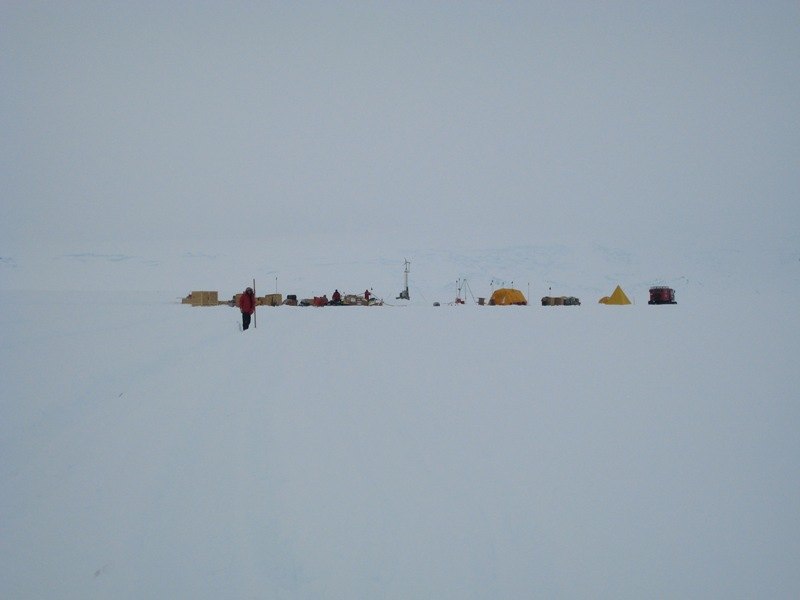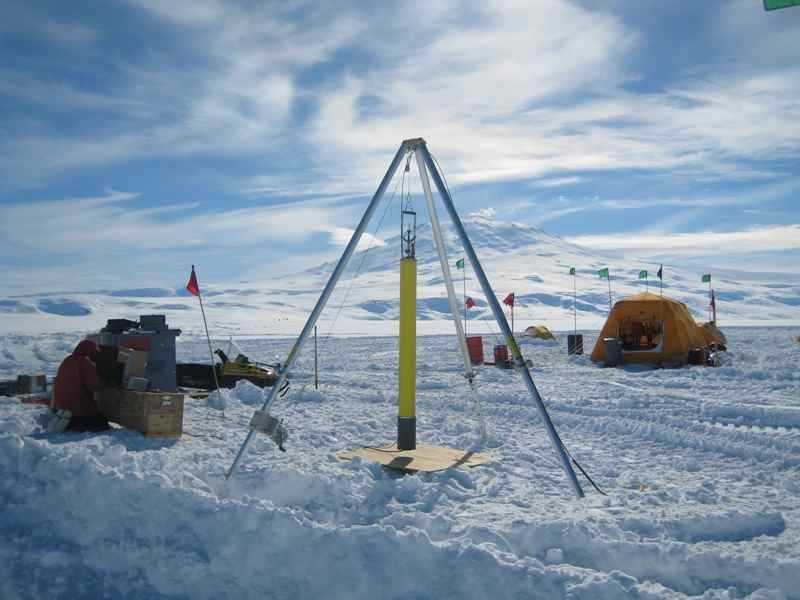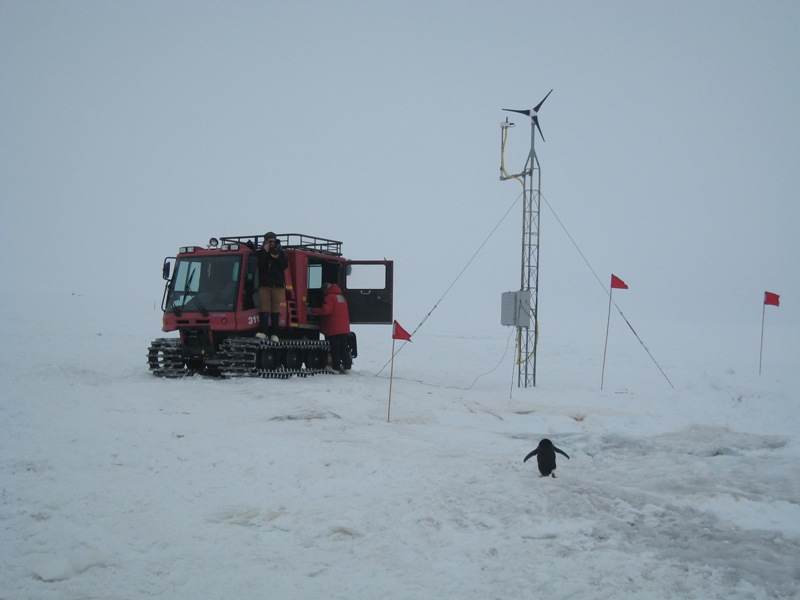|
I just returned from an 8 day field camp out in Windless Bight, about 25km from here, helping drill a hot-water hole 200m through the Ross Ice Shelf, then deploying a prototype ocean flux profiler through the 20cm diameter hole before it closed back up. There were 5 of us doing the work, right from hauling out on two skidos and one piston bully, to setting up the camp (one "Artcic Oven" 8'x20' mess tent, and individual mountain tents for sleeping and storage, and a Scot tent for "reading the newspaper"). All the heavy hotwater drill gear (Martin and Dale's from Fairbanks) and my winch, profiler and support gear came out on two huge articulated trailers dragged by a D-8 cat, which also dragged a smaller fork lift-equipped caterpillar tractor. It looked like something out of Dune ...We had marked out the camp the morning we arrived, allowing the heavy gear to be placed just where it was needed (a couple of things were >400kg). The setting of the site is incredible, 8km out from the base of Mt Erobus, looking across the Ross to Black and White islands and the Royal Society Range (the Brits named just about every rock!) in the distance.
We were fortunate to have great weather, mostly low winds and clear skies (requiring constant sun screening) allowing us to get the work done in about a week. The work was very physical, and quite tricky. Jim (who works with me), Bob (from NASA) and I were very much part of the drill team, and there was a lot hose handling, winching, shoveling and hauling in making the hot water drilled holes. 4 large diesel water heaters, a 12 kw diesel generator and a large diesel pump system delivered hot water to one of three nozzles that were sequentially lowered down the hole using simple hose guides at the surface. Initially we had to make a 1000 gallons of water from snow until we got through the firn (compacting snow layers) to the glacial ice, where the melt water would pond. After this depth, we lowered a well pump allowing us to re-circulate the water (although twice we had to make extra water by shoveling more snow for an hour or two - not a high point).
We drilled a total of three 200m deep holes, one for a grounding line, the main hole and a screwup hole that I managed to drop a bathroom scale down while the "day visit" BBC cameras were rolling - they will have to at least cut the audio on that part. The profiler went down smoothly, reporting it's measurements in a "real time" mode as it descended. It was a real achievement getting the highly specialized profiler system in place under the ice shelf, where it will profile up and down the communications cable once a day measuring heat and salt circulation in the ocean cavity. It will also park at positions in the water column commanded from our lab at NPS to make turbulent flux measurements of heat salt and momentum, so that we can better model the exchanges between the ocean and the glacier. The data is uploaded through and inductive modem to a surface tower and electronics that records the data blocks, then transfers them back to our lab via an Iridium satellite modem. Alberto (NASA) joined us in time to lower his underwater camera down the main hole giving us a clear view of the sides of the hole and the exit out into the ocean cavity below.
The camp packup went smoothly and we had a couple of days to get the back-haul freight organized before returning to Christchurch. At the last minute, I decided to stay an extra 4 days to diagnose a problem with the profiler, which involved another trip to the site in the piston bully. That is still a work in progress, but that site visit greatly narrowed the problem to the main processor in the profiler - the rest of the systems are fine. About 2km from camp, we saw our first penguin by the road looking at us - a small Adelie about 70cm high. We had never seen penguins by themselves out in the Weddell. After the photo op, we continued on to the drill site and did our tests, and about 40 minutes into it, the same penguin came running up the road to us, and stood around about 5m from us for the rest of the time we were there. They are amazingly curious and seem to love something other than white to look at.
We look forward to getting back to NZ and soaking in some green, tree and vegetation like colors. We have had a few good walks around McMurdo, including a late night walk back from New Zealand's Scott Base, after a bar visit, in full sunlight and no wind two days ago. It is all quite a sight.
|
|



